Who was Luigi Bartolini?
Luigi Bartolini (1892-1962) was only known to me as a writer born in Cupramontana who wrote the book Bicycle Thieves. It became internationally famous when it was adapted into a film by Vittorio de Sica. Bartolini’s book was translated into over 40 languages! But he didn’t just create literature; he was also globally recognized for his etchings and engravings.
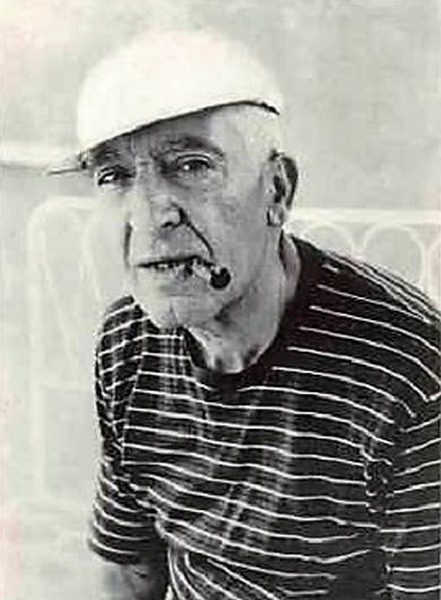
His works are held in the collections of international museums, including the MOMA in New York, the National Gallery of Art in Washington, and the Uffizi in Florence.
Bartolini studied art, art history, as well as architecture and anatomy in Siena, Florence, and Rome. Although he spent most of his life in Rome, he was drawn back to Le Marche from time to time, where he worked as an art teacher in places like Camerino, Macerata, and Osimo. During the Fascist era, he was temporarily transferred to Merano as a punishment and kept under observation as an art teacher there.
Exhibition “Bartolini attraverso il Colore”
In 2023, on the occasion of the 60th anniversary of his death, several events were organized, including the exhibition “Luigi Bartolini attraverso il Colore” (Bartolini in Color) at the Museo Buonaccorsi in Macerata.
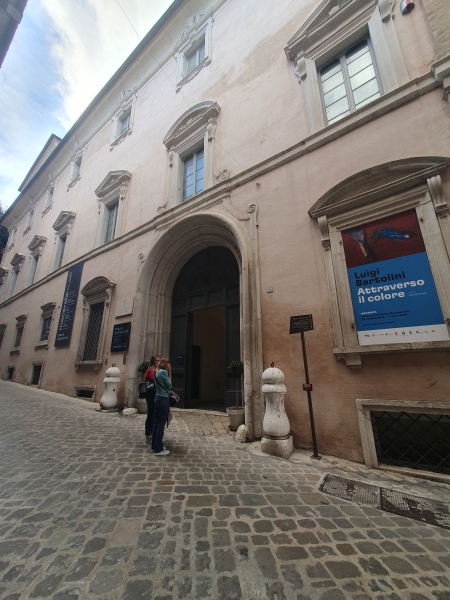
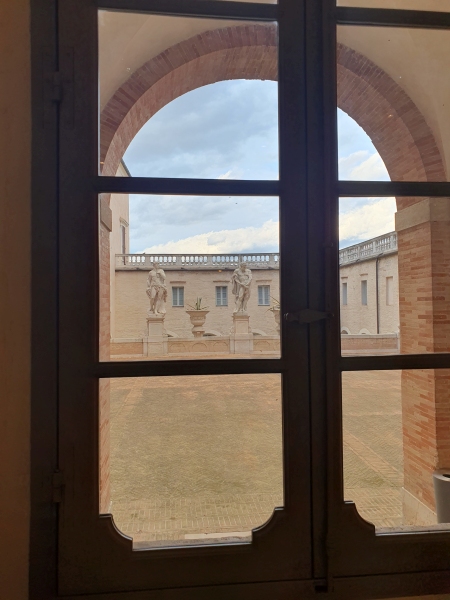
“That sounds exciting, let’s go check it out together,” we said from the Eccolemarche blog. So, on a warm day in mid-November, we headed to Macerata. We parked at the Sferisterio parking lot, where plenty of spaces are provided for visitors to the famous open-air arena, lo Sferisterio. Then we had to walk a bit because the charming old town is only accessible to limited traffic.
Laura had to work that day, so we arrived relatively late and had the beautiful museum rooms almost to ourselves!
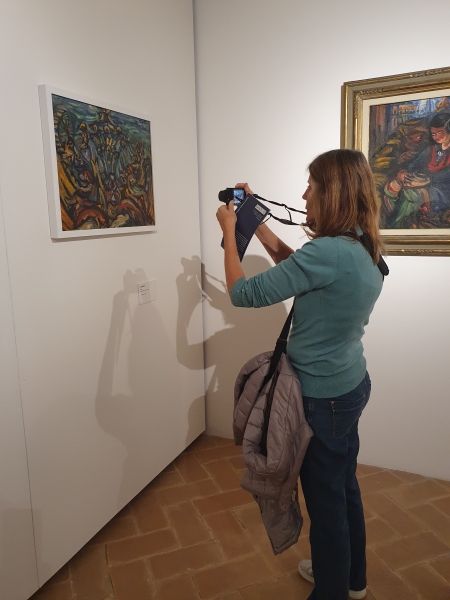
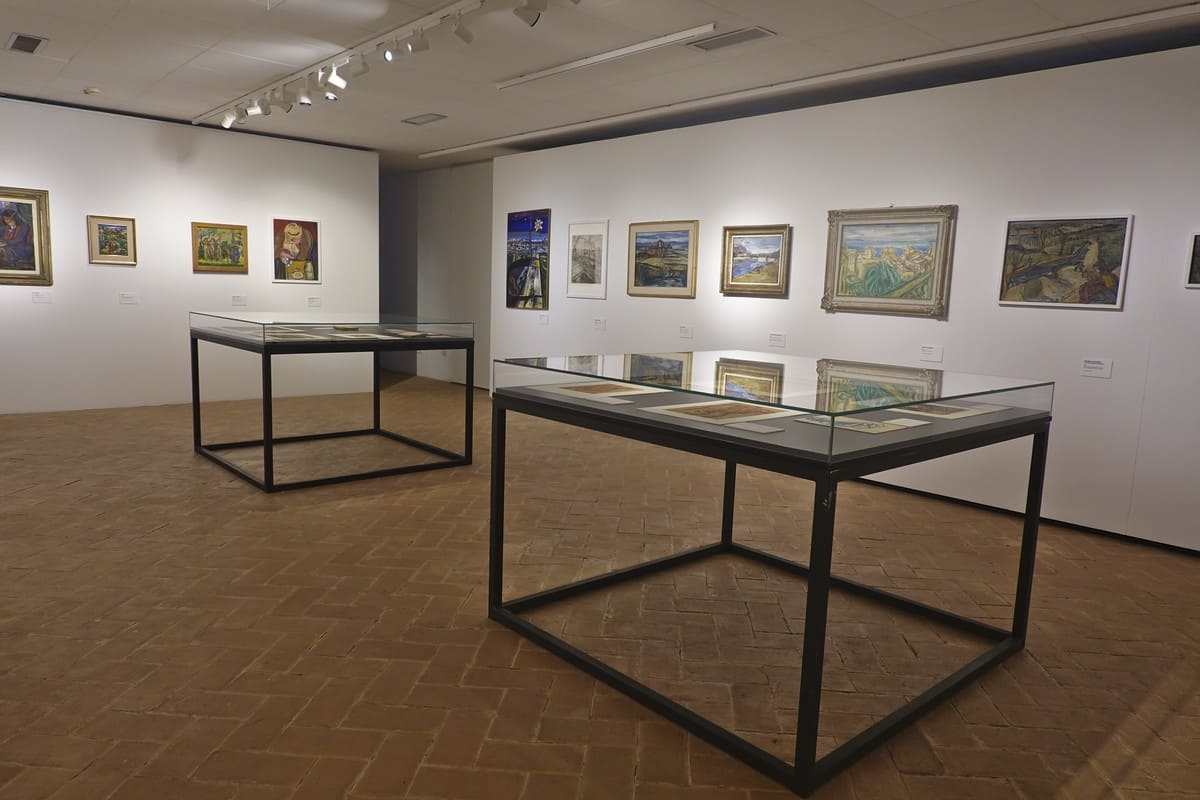
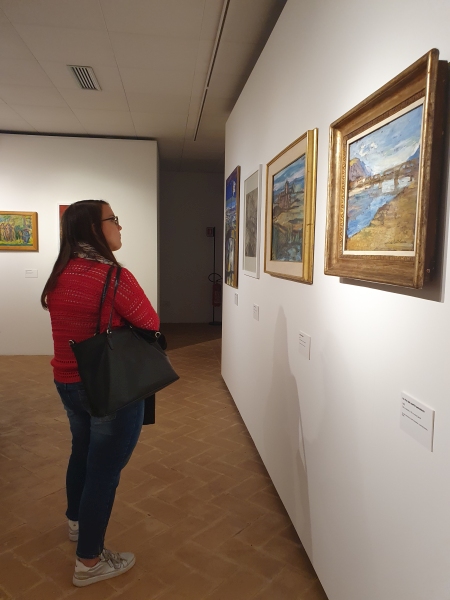
Until then, I wasn’t familiar with Bartolini’s oil paintings: Incredibly vibrant colors, which stood in stark contrast to Bartolini’s mostly monochromatic etchings.
Even the poster at the entrance was incredible! A kingfisher lying lifeless next to a spatula said it all about the exhibition: the intense colors, the humor or irony in Bartolini’s paintings (was the kingfisher killed by the spatula or does the spatula merely symbolize the painter’s generous use of color?), and one of his typical motifs, the quirky still life.
The exhibition comprises about 60 paintings and is divided into 4 thematic areas:
1. Still Life – Nature Morte
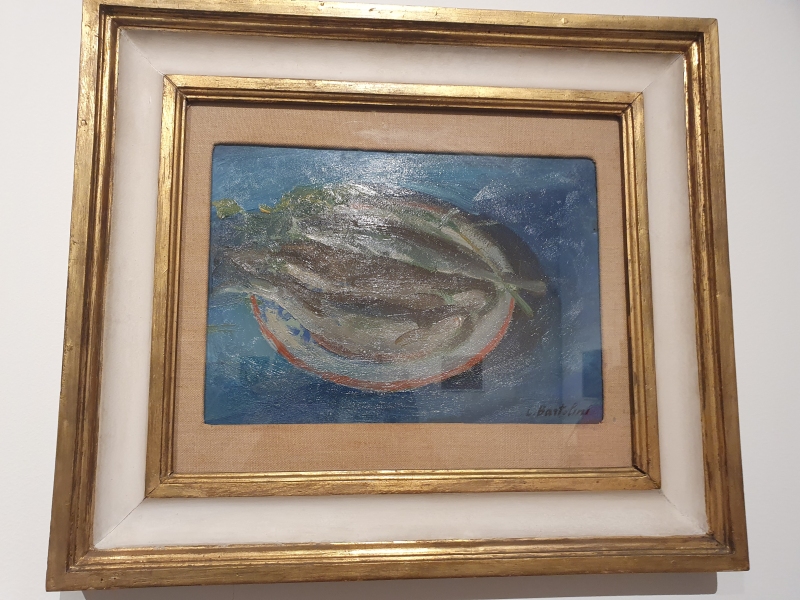

The still lifes were Elke’s favorites: no gruesomely shot pheasants as in a classic still life and no homage to the hunters. Instead, a poetic representation, such as the one of the Pernice di montagna (alpine snow grouse): Bartolini lovingly describes the bird in his painting as an angel with feathers and pink feet.
2. Domestic Intimacy – Intimismo Domestico
The works of domestic intimacy revealed more about Bartolini. He believed his works were always autobiographical, as the protagonist of his book Bicycle Thieves is said to be the artist’s alter ego. And so we spotted many portraits of his daughter, friends, and self-portraits.
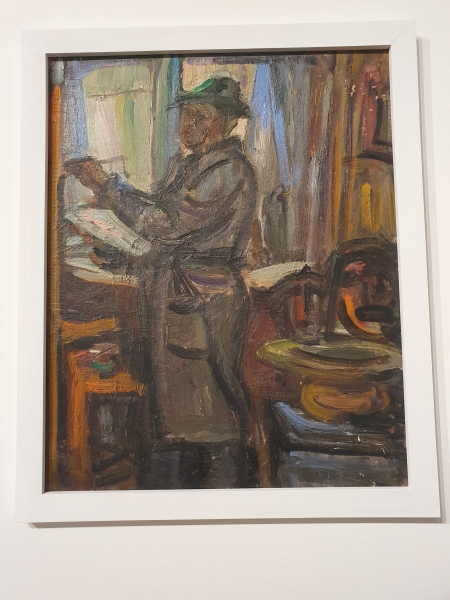

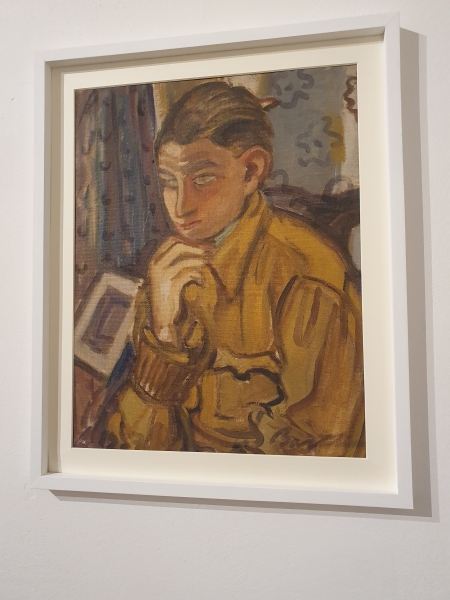
3. Lanscape – Paesaggio
Even in the landscapes, Bartolini’s experience is reflected: We saw places like rivers, sea, and hills, as we knew them from the Marche region.
4. Everyday Life – Brani di Vita
The fourth category, the life segments (brani di vita), showed scenes of everyday life, such as the picture of the Mietitrice (mower), which was typical for Le Marche at his time. This was definitely my favourite part.
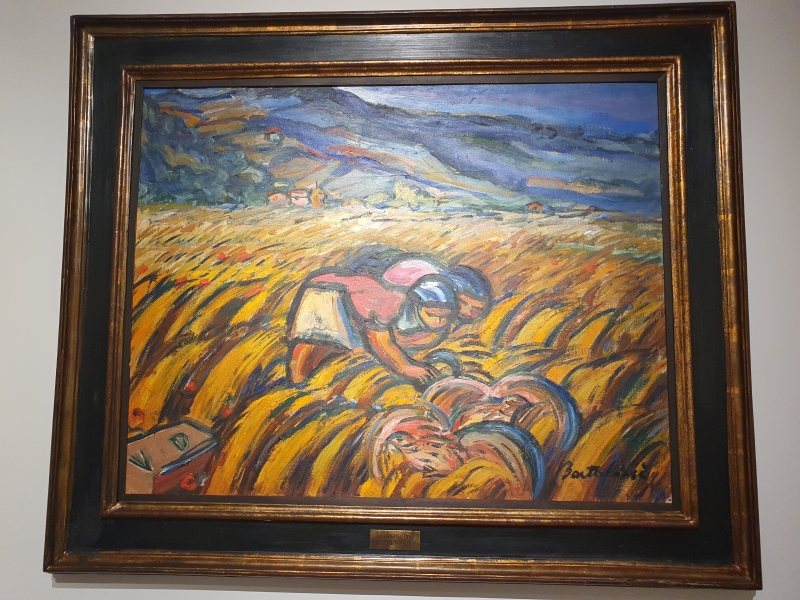

Bartolini’s Poetry, Letters und Prose
In some display cases, there were also examples of his poetry, prose, and correspondence to see. A copy of Bicycle Thieves was of course not missing, as well as one of his cover designs on the subject.
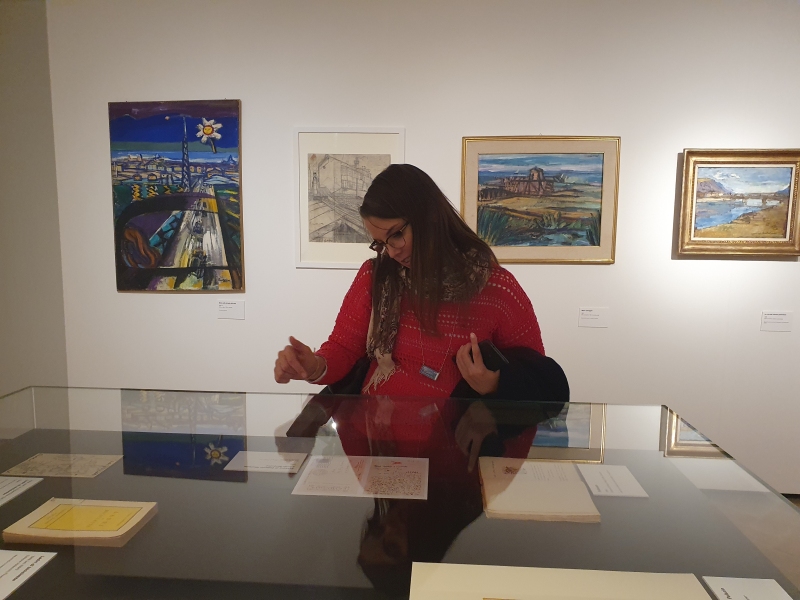

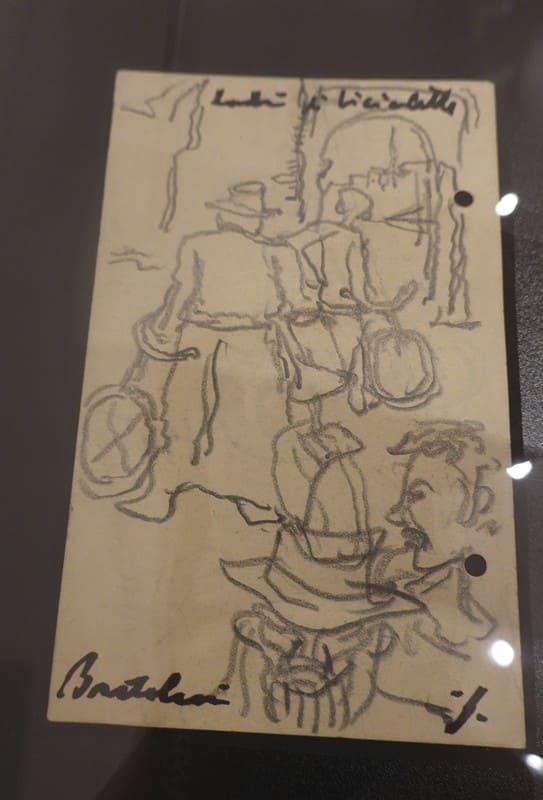
Carriage museum
Since we were already there, we also visited the carriage exhibition at the Museo Buonaccorsi, albeit quickly, because the museum was about to close. We had reported on it before, but we found that you can see the exhibition multiple times.
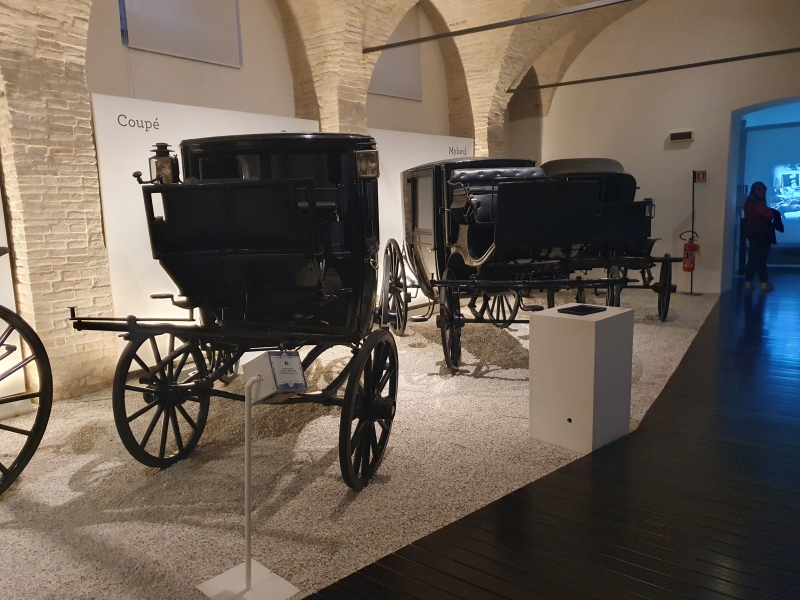

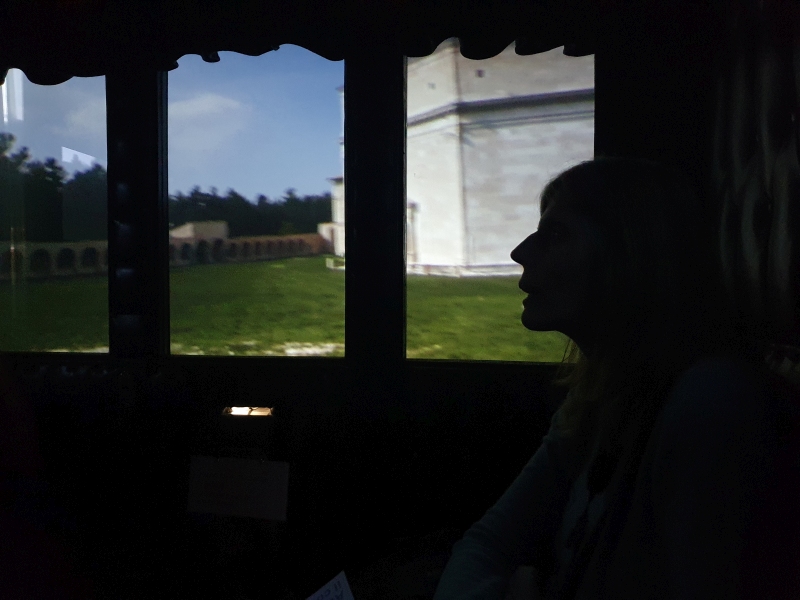
This time, the simulated carriage ride was also open, where you can choose a virtual route:
Earthquae and Dessert
And then we wanted to quickly see the remaining rooms of the museum because there were beautifully decorated rooms. But, oh! Suddenly Elke and I looked at each other and said: The floor was shaking, we feel weird – that was an earthquake! No, one of the museum staff said, it was probably just a bus passing by that made the wooden floor vibrate. But shortly after, she came back excitedly and said it was indeed an earthquake. Fortunately, nothing happened.
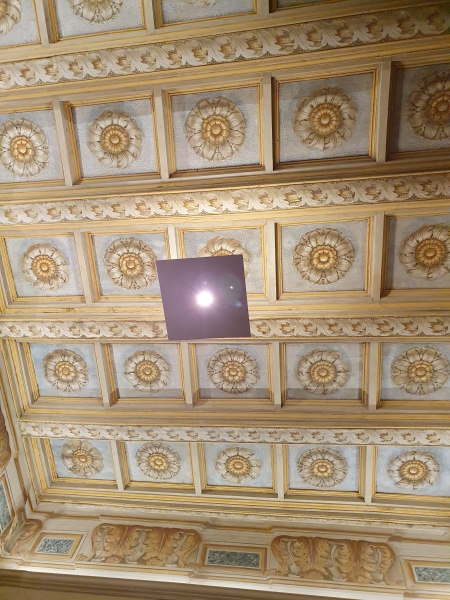
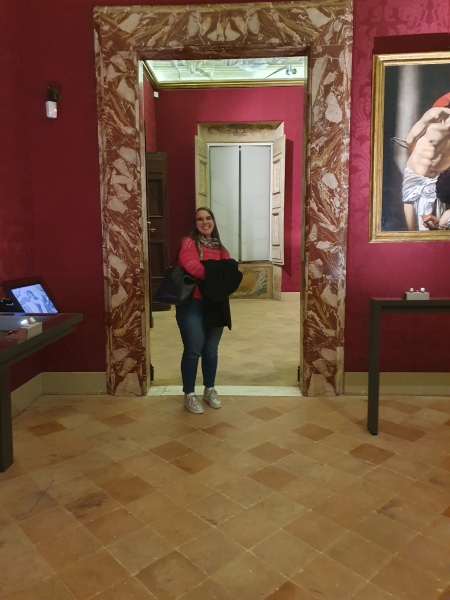


But of course, we gladly took this as an opportunity to treat ourselves to something special in Macerata. At the Cioccolateria Magacacao, there were pastries worth every sin, with a view of the city tower (Torre Civica). All of this outdoors in the central Piazza della Libertà, where, apart from us, many students enjoyed the unusually mild temperatures – it was November 14th!
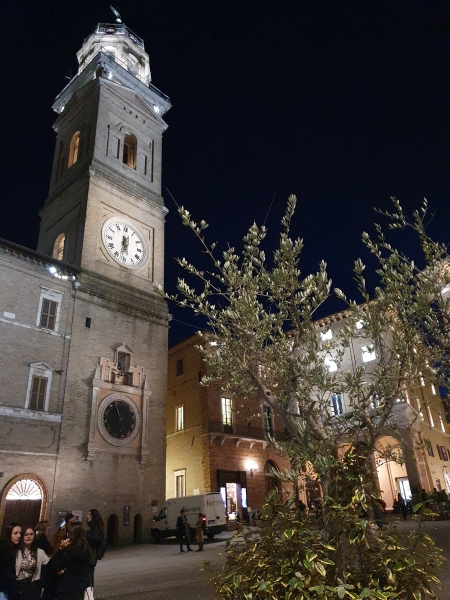
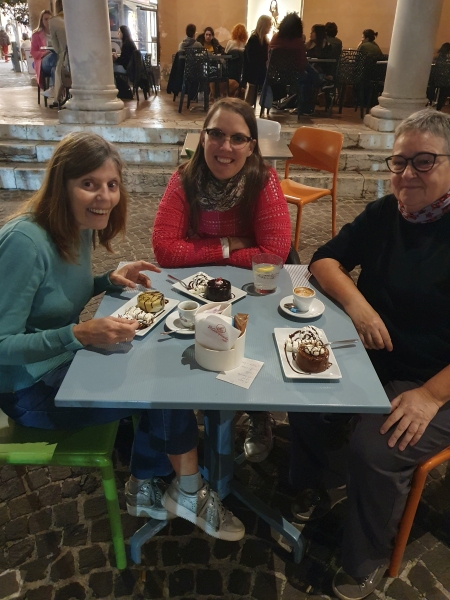
Tipps:
The exhibition “Bartolini attraverso il colore” can be visited until April 7, 2024.
The opening hours at Palazzo Buonaccorsi according to their website are:
- November to March: Tuesdays to Sundays 10:00 am – 1:00 pm / 3:00 pm – 5:30 pm
- April, May, and October: Tuesdays to Sundays 10:00 am – 1:00 pm / 2:30 pm – 6:30 pm
The ticket office closes 30 minutes before the end of the opening hours.
There is a free audio guide that can be activated via QR code on your smartphone – but only in Italian. However, many of the panels in the exhibition rooms are bilingual in Italian and English.
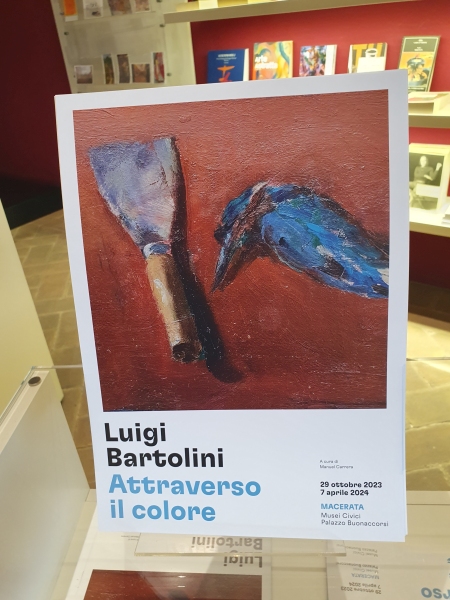



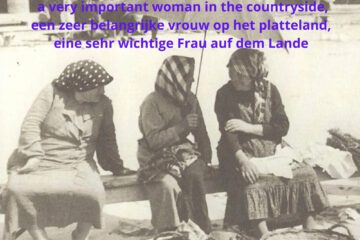
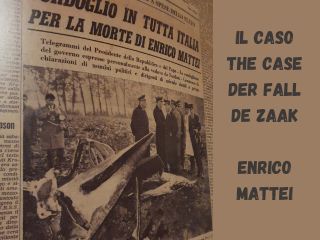
0 Comments